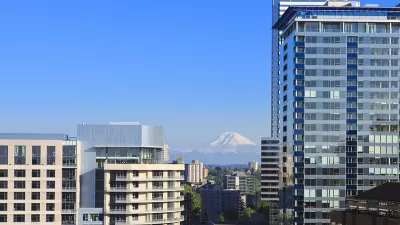The latest Upshot by Emily Badger looks at why American cities with the greatest economic opportunity no longer attract the population increases of yore

North Dakota was the exception. Riding an oil boom earlier this decade, some counties in North Dakota correspondingly had significant population and household growth. Otherwise, since 2000, metro areas in the United States with the most prosperity don't have the most growth.
In the latest Upshot in the New York Times, Emily Badger reports that, historically, boomtowns had correspondingly high growth rates. Chicago in the late 1800s, Detroit between 1910 and 1930, Los Angeles in the 1920s, and Houston after 1950 all experienced a swelling population as economic development took off.
Why is this? Many coastal cities, for example, have land use restrictions and actual land shortages that inhibit growth. One solution is to reduce the barriers to the creation of more housing in the most prosperous and expensive cities, which is both a political and economic challenge. Badger concludes that the federal government does not have the power to do this, but local cities and suburbs do.
FULL STORY: What Happened to the American Boomtown?

Alabama: Trump Terminates Settlements for Black Communities Harmed By Raw Sewage
Trump deemed the landmark civil rights agreement “illegal DEI and environmental justice policy.”

Study: Maui’s Plan to Convert Vacation Rentals to Long-Term Housing Could Cause Nearly $1 Billion Economic Loss
The plan would reduce visitor accommodation by 25% resulting in 1,900 jobs lost.

Planetizen Federal Action Tracker
A weekly monitor of how Trump’s orders and actions are impacting planners and planning in America.

Wind Energy on the Rise Despite Federal Policy Reversal
The Trump administration is revoking federal support for renewable energy, but demand for new projects continues unabated.

Passengers Flock to Caltrain After Electrification
The new electric trains are running faster and more reliably, leading to strong ridership growth on the Bay Area rail system.

Texas Churches Rally Behind ‘Yes in God’s Back Yard’ Legislation
Religious leaders want the state to reduce zoning regulations to streamline leasing church-owned land to housing developers.
Urban Design for Planners 1: Software Tools
This six-course series explores essential urban design concepts using open source software and equips planners with the tools they need to participate fully in the urban design process.
Planning for Universal Design
Learn the tools for implementing Universal Design in planning regulations.
Caltrans
Smith Gee Studio
Institute for Housing and Urban Development Studies (IHS)
City of Grandview
Harvard GSD Executive Education
Toledo-Lucas County Plan Commissions
Salt Lake City
NYU Wagner Graduate School of Public Service




























